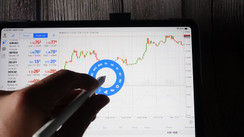Currency trading can be lucrative for those looking to make some quick money. With so many different currencies fluctuating, starting trading coins yourself can often seem overwhelming. Fortunately, you can use plenty of strategies to maximize your success and minimize your losses when involving yourself in currency trading.
In this article, we'll discuss three simple yet effective strategies - fundamental analysis, technical analysis, and price action – that you can adopt into your portfolio to begin seeing results with currency trading immediately.
Fundamental analysis
When it comes to successful currency trading, using fundamental analysis is vital. Fundamental analysis involves a thorough review of a country or region's economic and financial state, which can result in valuable insights into how their currency value may fluctuate. Understanding a broader region's macroeconomic context can help you identify the potential opportunity for investors and traders alike.
By thoroughly examining local economic statistics and global indicators like sovereign debt, investors can effectively build a strategy that helps them forecast changes in international currency exchange rates and incorporate those insights into their portfolios for maximum success and profit.
The main benefit of fundamental analysis is that it allows traders to make data-driven decisions when trading, freeing them from the influence of emotion or gut instinct. Additionally, incorporating Public Finance International (PFI) into your fundamental analysis can help you paint a clearer picture of the market and make more informed trading decisions.
Another benefit of fundamental analysis is that it can easily be adapted according to different strategies, such as swing trading or scalping.
Technical analysis
Technical analysis takes a different approach to currency trading than fundamental analysis. This strategy studies past market data and identifies patterns or trends to predict future price movements. By using technical indicators such as moving averages, oscillators, and resistance lines, traders can accurately determine where their investments are likely to head soon.
The main advantage of this type of analysis is its ability to pinpoint entry and exit points for successful trades; this information can then be used to create a compelling portfolio strategy with maximum profit potential. Additionally, technical analysis is not limited to one market type, so that it can be used effectively for long- and short-term investments.
Another benefit of technical analysis is that it requires very little capital. By trading on leverage, you can make high-value trades without investing large sums of money, meaning it's an excellent strategy for those looking to start trading with limited funds.
Price action
Price action is another important strategy for successful currency trading. This strategy focuses on examining market price movements over time to identify profitable trading opportunities or patterns that could be exploited. Traders who use price action often look for critical support and resistance levels that may indicate a potential buy or sell signal.
In addition, traders can also use various chart patterns to identify profitable trades in the market. For example, uptrends, downtrends, and reversal patterns can all offer insight into possible profitable trades. The main benefit of using price action is its ability to read the market sentiment without relying on any particular indicator or analysis tool.
Another benefit of price action is its ability to identify trades with high potential returns. By understanding how the market works and where opportunities lie, investors can tailor their portfolios to maximize profits.
How to implement
Now that you know the three main strategies for successful currency trading, it's time to learn how to implement them. First and foremost, it's crucial to stay organized and keep track of your investments, and it means clearly understanding your portfolio and the strategies you use for each investment.
Creating an effective risk management plan is also essential for successful currency trading. Risk management allows traders to minimize losses and focus on profitable trades likely to yield returns. Developing a strategy based on fundamentals and technical analysis can help investors make decisions based on facts rather than emotion or gut instinct.
Finally, keeping up with news related to the markets can be beneficial in helping investors identify potentially profitable opportunities. By monitoring the latest developments, traders can gain insight into changes in global currencies that could result in lucrative investments.
What to remember
Successful currency trading requires a combination of knowledge, skill, and discipline. It is essential not to be swayed by emotion or gut instinct when making decisions. Instead, it uses data-driven methods such as fundamental and technical analysis to make informed trades. Additionally, price action can offer insight into potentially profitable investments while staying updated on the news related to the markets can help traders identify lucrative opportunities.
Ultimately, having an effective risk management plan and keeping track of your investments are vital components of successful currency trading. By doing so, investors can maximize their profits while minimizing losses and create a compelling portfolio strategy tailored to their needs.
Conclusion
Successful currency trading requires a combination of knowledge, skill, and discipline. By understanding the fundamentals of trading, using technical analysis to identify entry and exit points, and incorporating price action strategies for potential profitability, traders can create a compelling portfolio strategy that yields maximum returns.
Additionally, staying organized with risk management plans and keeping up with news related to the markets is also essential for successful currency trading. With careful planning and dedication, investors can make informed decisions that result in lucrative investments.





